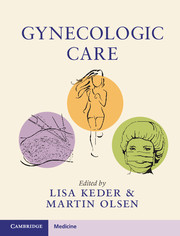Book contents
35 - Ovarian Sex Cord-Stromal Tumors
from Section 5 - Gynecologic Oncology
Published online by Cambridge University Press: 01 February 2018
Summary
Introduction
Ovarian sex cord-stromal tumors are uncommon when compared to epithelial neoplasms. Sex cord-stromal tumors account for approximately 7 percent of all malignant ovarian neoplasms. These tumors are a heterogeneous group of rare neoplasms that originate from the matrix of the ovary. Sex cord cells give rise to granulosa cells or Sertoli cells. In contrast, pluripotent mesenchymal cells give rise to theca cells, Leydig cells, and fibroblasts. When neoplastic changes occur within these cellular components, the resulting neoplasms are known as sex cord-stromal tumors. This chapter will review the subtypes of ovarian sex cord-stromal tumors including the incidence, morphologic and histologic features, surgical treatment, adjuvant treatment options, and tumor markers associated with these subtypes. In addition, the available data for genetic mutations or associations is also presented.
Scope of the Problem
The incidence of sex cord-stromal tumors is low, with an overall incidence of 0.2 per 100,000 women. Sex cord-stromal tumors affect women of all ages. The incidence peaks in the 50–54 age group with an age-specific incidence of 0.56 cases in the 50–54 age group in the United States. As a heterogeneous collection, these tumors follow a bimodal distribution. Specifically, juvenile granulosa cell tumors, Sertoli-Leydig cell tumors, and sclerosing stromal tumors are found predominantly in prepubertal girls and within the first three decades of life. Adult-type granulosa cell tumors commonly develop in women with a peak incidence between 50 and 55 years of life.
Despite their rarity, these tumors represent 90 percent of all hormonally functioning ovarian neoplasms. As a result, patients usually present with clinical sequela of endocrinopathies resulting from excess estrogen or androgen production. Excessive estrogen production results from either tumor synthesis or peripheral conversions of androgens – both of these, in turn, influence age-dependent end-organ responses. The clinical responses can include precocious puberty, abnormal uterine bleeding, or postmenopausal bleeding. Elevated levels of testosterone or androstenedione can cause rapid defeminization or frank virilization and these findings strongly suggest the presence of a sex cord-stromal tumor. Furthermore, these endocrinopathies, especially excess estrogen, have associated risks of endometrial or breast cancer.
There are no specific radiologic features of sex cord-stromal tumors, as the gross appearance ranges from large multicystic to small solid masses.
- Type
- Chapter
- Information
- Gynecologic Care , pp. 340 - 349Publisher: Cambridge University PressPrint publication year: 2018

